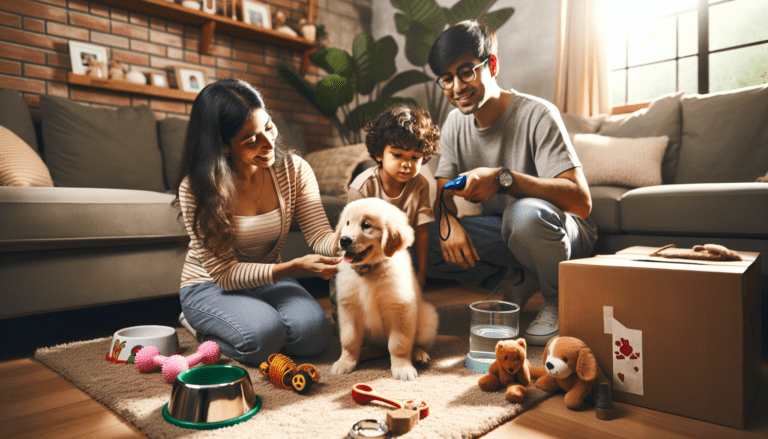Is the Lab Doxie Mix Dog Right for You? Complete Breed Overview
If you have ever heard of the “Dachsador” it is what most would refer to as a Lab Doxie mix, being a lovely combination between the Labrador Retriever and the Dachshund. Combine the friendly and social nature of the Labrador with Dachshund’s alertedness and loyalty; the result is a friendly and protective pet. This guide will take you through everything you’ll need to know about Lab Doxie mixes, from physical traits, personality, training needs, grooming, and common health issues.
Overview and Origin
The Lab Doxie is a relatively new hybrid breed that was born from the combination of the great Labrador Retriever and the wonderful Dachshund. Labradors are known for their friendly behavior and intelligent character, whereas Dachshunds are already famous for their independent and sometimes stubborn nature. Breeders wanted to combine both these traits into a loyal, alert breed well-suited for families or individuals that require a loving companion.
Physical Characteristics
Lab Doxie mixes can be extremely different depending on which of the parent breed the dog resembles the most. Dogs in this category weigh between 20 and 40 pounds and are from 10 to 14 inches tall. They either hereditarily have a short or medium-length coat with varied hues such as black, brown, yellow, or a combination of these. This creates a unique combination of body features that makes each Lab Doxie mix unique, some looking like Labradors and others with characteristics of their Dachshund heritage.
Personality and Temperament
A well-balanced personality often springs from both of its parent breeds in Lab Doxie mixes. They are good family dogs and thus can be quite attached to their owners. Dachshund’s influence may make them a little wary of strangers, but this is usually offset by the amiable nature of a Labrador. Excellent with children, including other pets-if socialized early not to set up a balanced temperament.
Exercise and Activity Needs
This breed is moderate to high energy and loves to be active. Labradors are a natural athlete while Dachshunds also need activity to prevent obese states. The Lab Doxie mix should get at least 30-60 minutes of exercise per day that may include walks, playtime and mental stimulation games. The exercise and activity help the breed in terms of physical as well as mental stimulation.
Training and Socialization
Lab Doxie mixes are intelligent and trainable from their Lab heritage, but may be stubborn at times like their Dachshund parent. They respond very well to positive reinforcement with rewards and praise. They need training to overcome undesirable traits and should be started early; consistency and patience are also rewards. They are good learners in social settings, as well, and early socialization will make them friendly to strangers and other animals.
Diet and Nutrition
Maintaining a sound diet is essential to keep the Lab Doxie mix healthy due to the tendency of both Labradors and Dachshunds to become obese. High quality dog food containing much protein and essential nutrients is very much in order, as portions should be controlled to avoid overfeeding and minimizing treats to prevent excessive calorie intake that can worsen health conditions, particularly those connected to joint strain and back conditions in shorter legged dogs.
Grooming Needs
Lab Doxie mixes have a relatively short to medium length coat that can really be kept quite easy when done. Most of the time, brushing is once a week. However, if it’s longer or denser, more frequently doing so may be needed. Their ears must be inspected and cleaned regularly, as Labradors tend to get ear infections most of the time, especially when they are fond of water. For their overall well being, teeth brushing and nail trimming every now and then are essential.
Common Health Issues
Lab Doxie mixes are prone to certain health issues inherited from both parent breeds. Some of the issues one should look out for include:
- Intervertebral Disc Disease (IVDD): Dachshunds are susceptible to this disease because their spines are longer. One can take good care of back issues by keeping themselves in good weight range and avoiding activities that may strain the spine.
- Obesity: Both the Lab and the Dachshund are prone to obesity. Therefore, portion control and regular exercise are extremely important for healthy living.
- Progressive Retinal Atrophy (PRA): This inherited disease can lead to a loss of eyesight; thus, your dog needs to be monitored with a frequent visit to a veterinarian.
- Hip and Elbow Dysplasia: The Labrador breed has a susceptibility to hip, elbow, or joint conditions so be aware of pain or stiffness in the dog’s joints.
Best Living Environment
Lab Doxie mixes can do well in a wide variety of living settings. They will do well in an apartment but need regular outdoor exercise to avoid boredom and destructive behavior. A house with a yard is best for them, but in the case of adequate exercise, it is not necessary. They can become quite attached to their owners, so they do best in homes where owners are rarely left behind for long periods of time.
Compatibility with Children and Other Pets
This hybrid generally gets along with children, making it a great family dog. However, due to their instincts to protect, they should be kept watchful of very small children. They are usually okay with other pets, but early socialization can help reduce territorial tendencies coming from the Dachshund parent.
Finding a Lab Doxie Mix Puppy
You can find Doxie mix puppies through good breeders or in rescue organizations. A puppy from a breeder will cost between $500 and $1,000, and this is decided by location and lineage. Find a breeder who will ensure that the parents of both breeds are tested for possible genetic health problems. Alternately, adoption from rescue organizations is also a great way to find a pet for your family.
Pros and Cons of Owning a Lab Doxie Mix
Pros
- Amiable, affectionate nature
- Gets along well with children and other animals
- Moderate requirements in terms of grooming
- Flexible to apartment life, requiring a lot of exercise
Cons
- Risk of health conditions such as IVDD and obesity
- Requires moderate exercise
- Can be protective or cautious of strangers if it does not receive proper socialization
- Can display a lot of stubbornness during training
Frequently Asked Questions
1. How big do Lab Doxie mixes get?
They tend to range from 20 to 40 pounds, with heights of about 10 to 14 inches tall.
2. Are Lab Doxie mixes good with kids?
Lab Doxie mixes are generally child-friendly, but great care should be taken when exposed to little ones because it is big and full of energy.
3. How much exercise do Lab Doxie mixes need?
He requires at least 30-60 minutes of daily exercise, meaning he would need walks and considerable playtime to keep him healthy and energized and less prone to boredom.
4. Do they shed a lot?
They tend to have average shedding and can be brushed a bit weekly.
5. Are Lab Doxie mixes prone to health problems?
They could inherit such conditions like IVDD, obesity, retinal issues, etc, so veterinary check-up will be vital with appropriate precautions.
6. Can Lab Doxie mixes be left alone?
Lab Doxie mixes might have problems such as separation anxiety so are best left to minimal period of absence from their house.
Conclusion
The Lab Doxie is a sweet and loyal pet. They combine the friendly, outgoing nature of the Labrador with the playful, curious spirit of the Dachshund, blending the best traits of both breeds. Proper care, training, and attention make these lovable dogs thrive in a home. If you want a pet for your family or a loyal friend, here’s some affection, intelligence, and charm.







